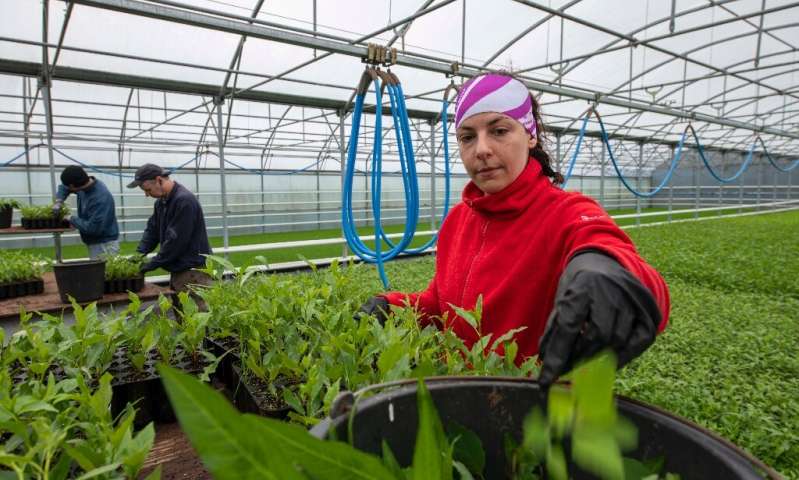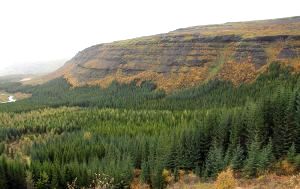Iceland tree planting (credit: phys.org)
Restoring a landscape that has been deforested, depleted, and otherwise destroyed is a challenge. It is particularly so when the forest soils were blown away after more than 1000 years prior on a Arctic island.
When their Viking fore-bearers settled Iceland in 874 AD it had rich forests of birch, aspen, pine, and willows. These tree species may have covered up to 40% of the island not glaciated. As an ecosystem, the forests had developed at the end of the Pleistocene ice age but they had required thousands of years to cover suitable habitats on the cold and windy island. Environmental conditions are moderated by mature forests that affects soils, temperature, and light for natural regeneration. These physical factors are maintained by the forest itself.
Within three centuries of settlement, Iceland was virtually deforested by conversion to farms and pastures. The Arctic island is famous for its harsh weather so exposed soils blew away leaving only remnant patches of the former trees. These failed to regenerate due to overgrazing of livestock leaving current Icelandic landscapes naked. They are often referred to as, "a desert with rain". This history can be read here.
In the 20th Century, virtually at the same time when the US Forest Service was created by Theodore Roosevelt in 1905, the Icelandic parliament established their own service. One its goals was to try and restore trees and soils to the island's denuded landscapes. Most of the Service's early attempts failed for a lack of proper knowledge involved in how tree naturally establishment and regrow. As a scientific discipline, ecology was still in its infancy even though ideas about its importance reached as far back as Aristotle. On Iceland, one of the prime driving forces for restoration of a forest would require understanding the process of ecological succession but that was unknown then. The mechanics and time required for successful restoration had only been recently detailed for prairie plant communities in Wisconsin, not for forests anywhere. The Icelandic foresters were 'planting in the dark' using the wrong species in the wrong places. Future efforts and increased knowledge of plant science increased the establishment rates.


Tree nursery, Iceland (credit: Icelandic Forest Service) Restored valley forest, Iceland (credit: Icelandic Forest Service)
Icelandic forest restoration efforts continue. Even tourists, interested in a different visitor experience, can volunteer for tree planting under a program offered by a local travel service. Correcting the impacts of deforestation more than 1100 years later will take time. However, every bit of proper tree planting would be a productive addition to any vacation as well as a soak in one of the island's famous hotspring pools. WHB